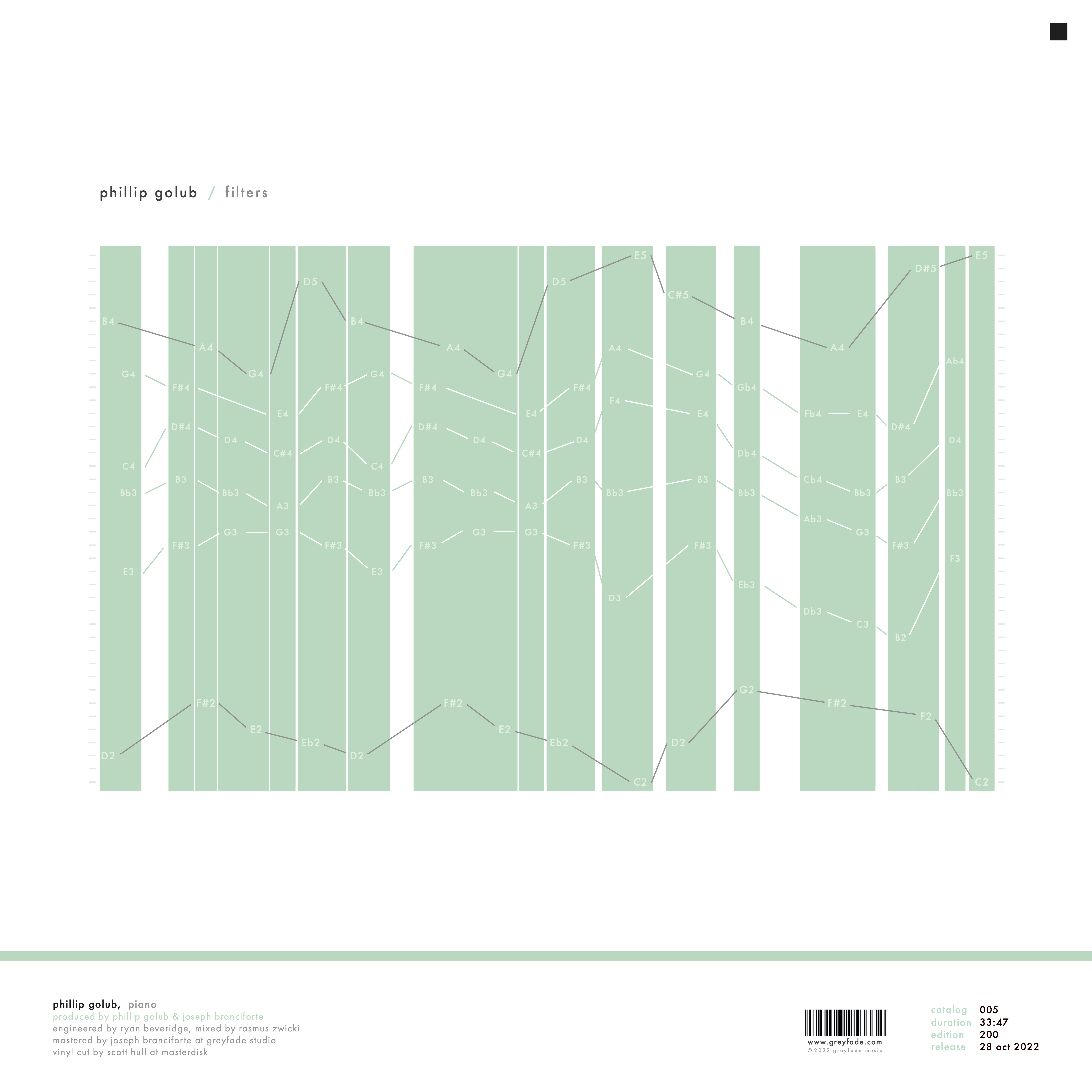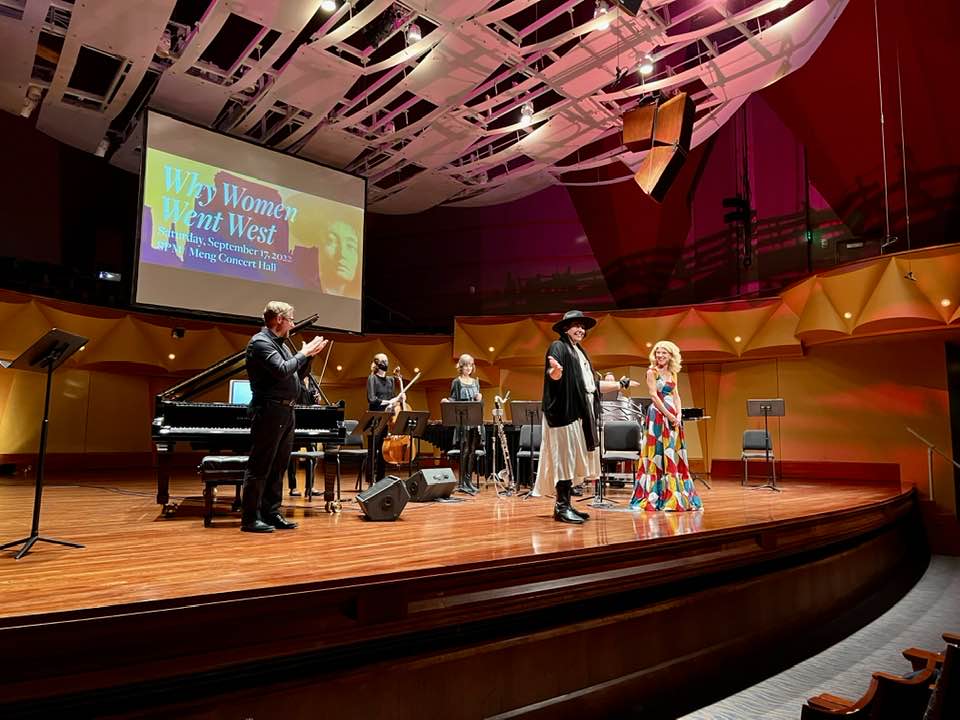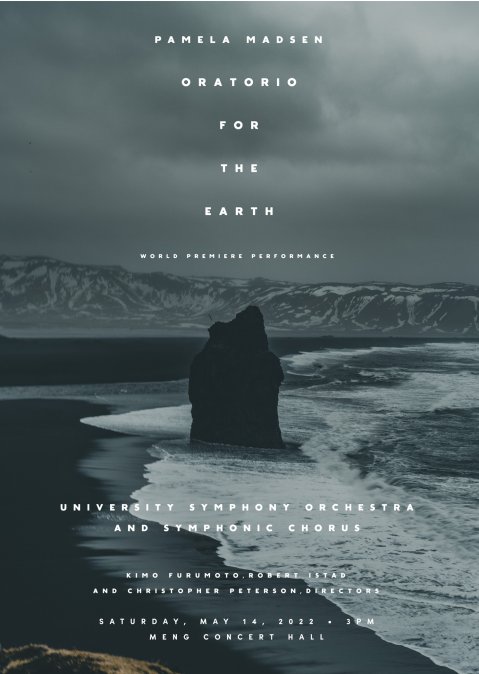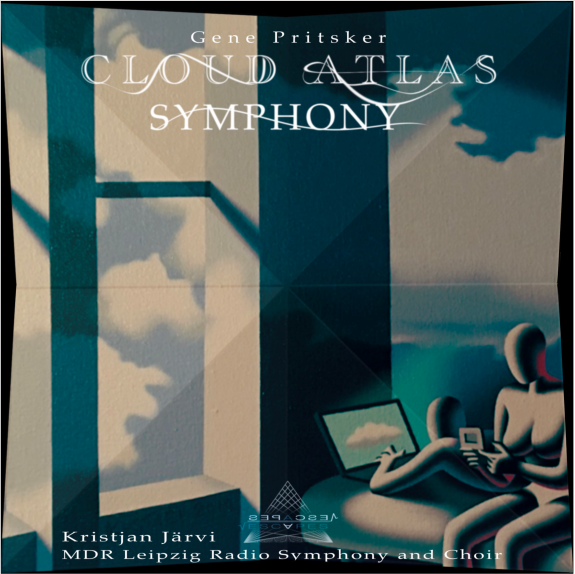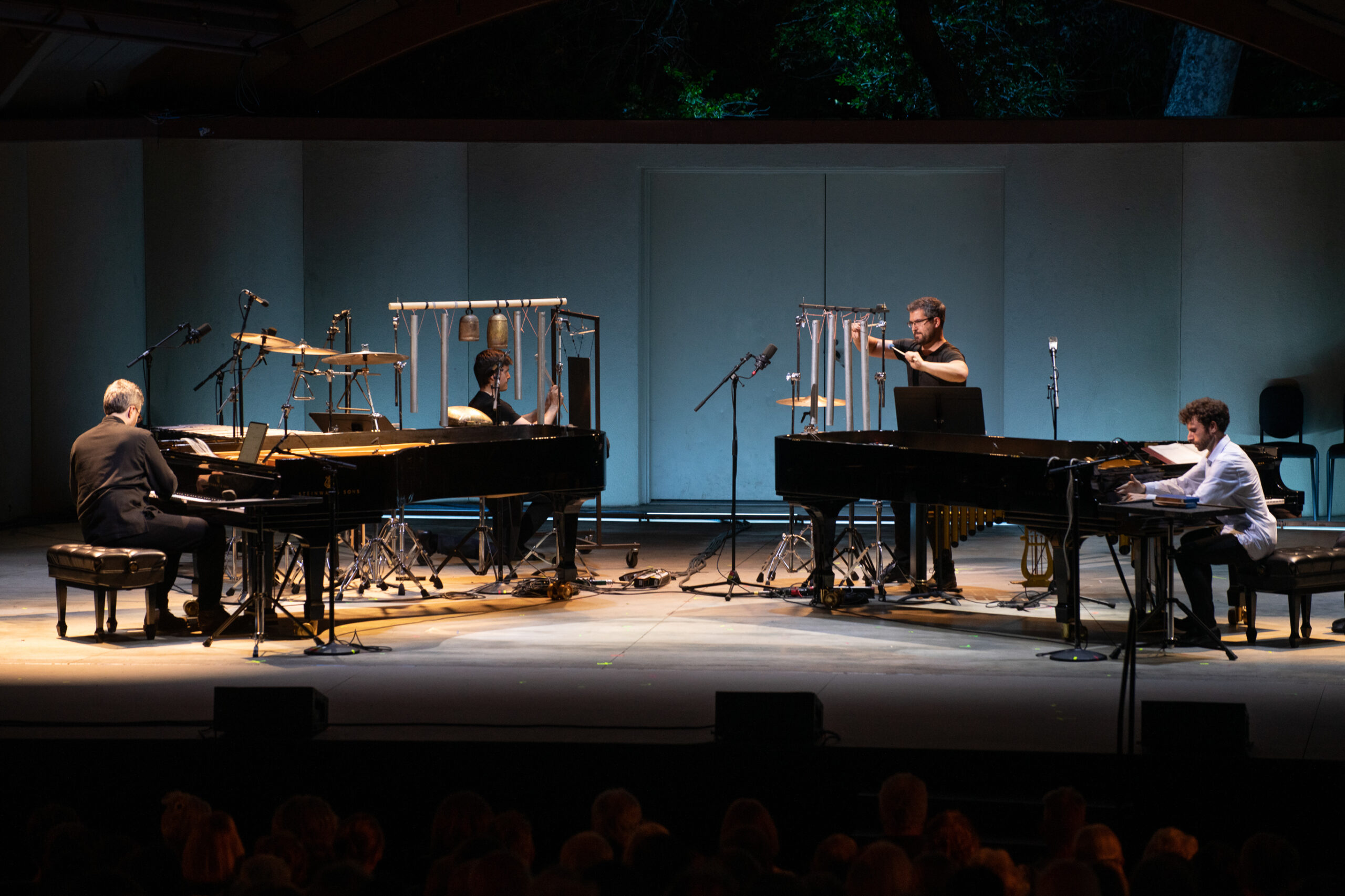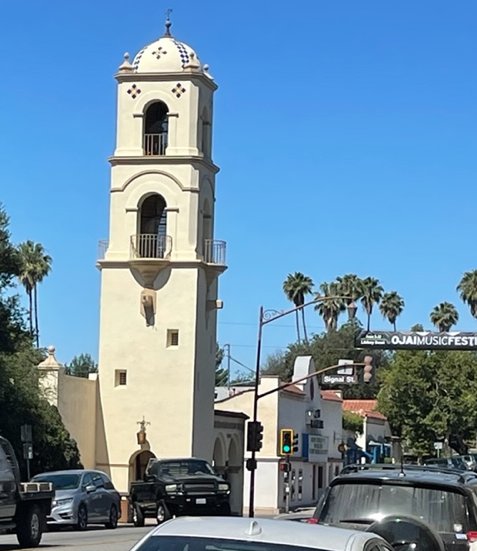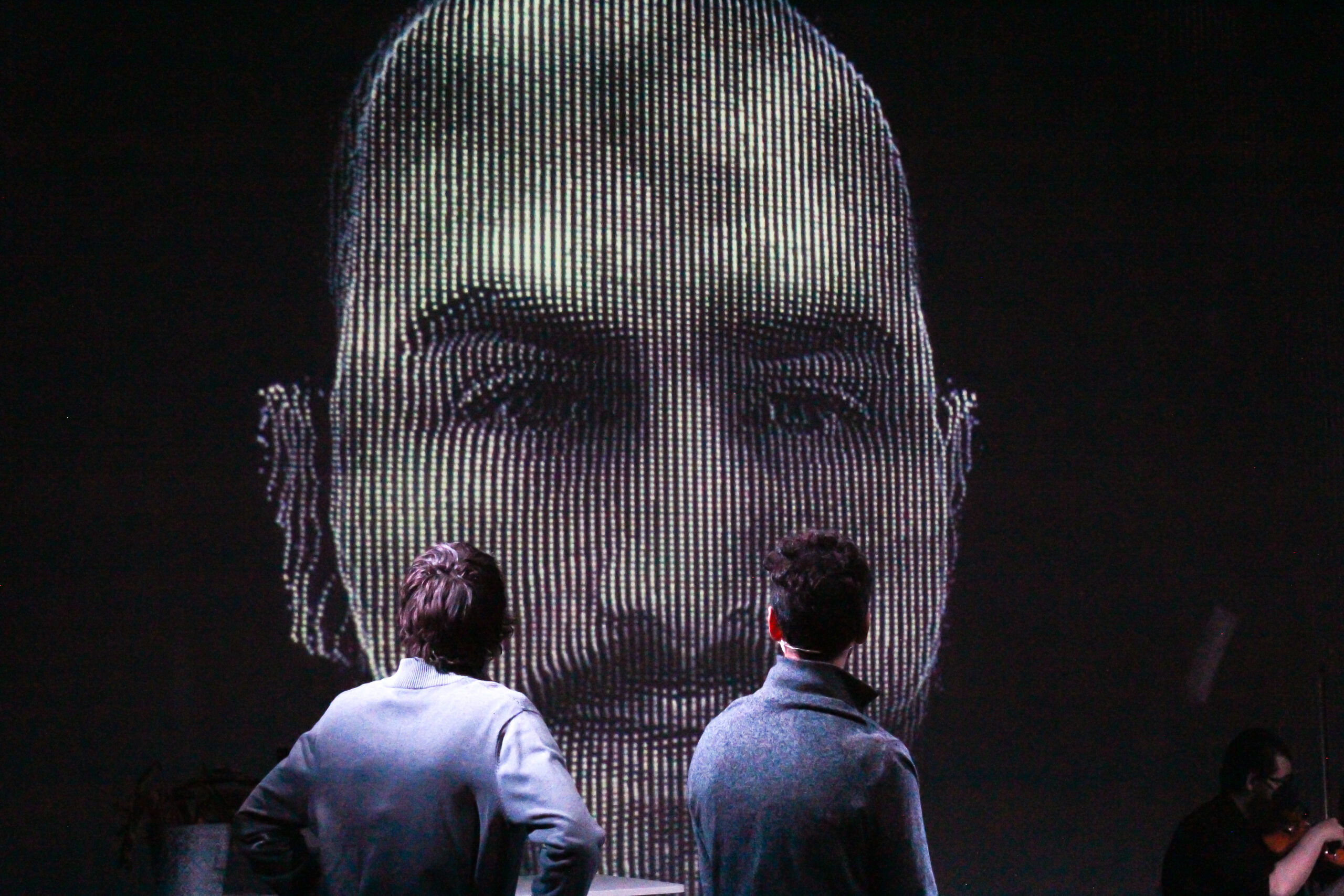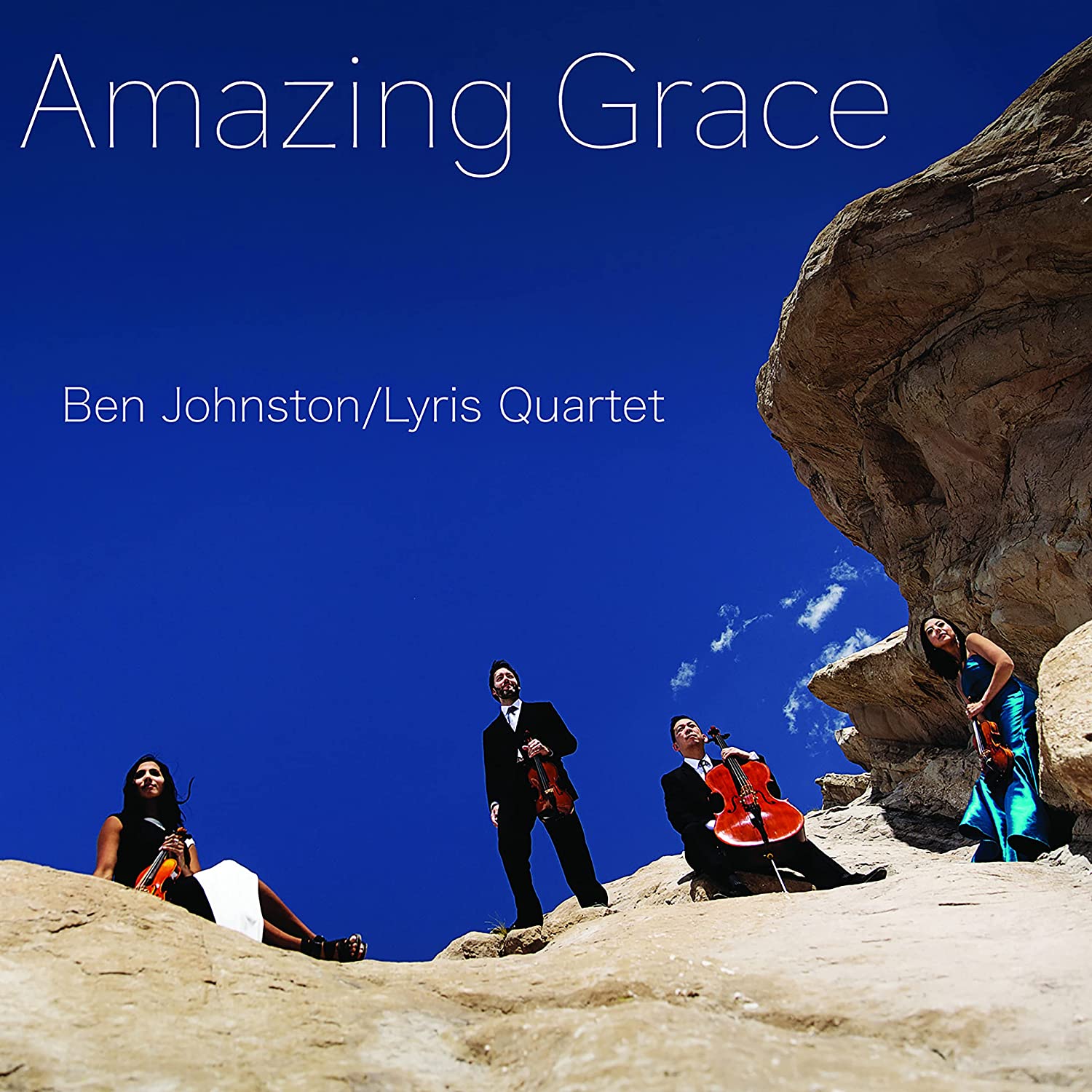
Microfest Records has released Amazing Grace, a CD collection of three pieces by American composer Ben Johnston (1926-2019). The album features the Lyris Quartet and includes the title track, Amazing Grace (1973), Quartet #9 (1987) and Octet (1999). Kyle Gann, once a student of Ben Johnston, rightly states in his liner notes that: “Not all musicians realize it, but Ben Johnston, was a major figure in the Midwestern new music world in the 1970s and ‘80s, comparable to John Cage on the East Coast or Lou Harrison on the West. He looms even larger in the world of microtonal music, for his string quartets, sonatas for retuned keyboard, and other works are among the most compelling works ever written in alternate tunings.” The Lyris Quartet is one of the leading string quartets in Los Angeles and has performed a wide repertoire ranging from the classical to innovative contemporary music. Supporting musicians heard on Octet are also widely known in the Los Angeles new music scene.
Ben Johnston was one of the leading late 20th century exponents of alternate tuning, the use of pitches outside of the standard 12 tone equal temperament heard in almost all of our popular music. Johnston employs alternate tuning not for novelty, but rather to achieve better harmonic relationships within a piece and to avoid the compromises built into the standard 12 tone system. All of this has the effect of enriching the sound and increasing the welcoming quality of the music to the listener. A special notation scheme for the new pitches was devised by Johnston and the Lyris Quartet has adapted to this with great skill.
Amazing Grace, the first track of the album, is Johnston’s best known work as it is based on the popular hymn tune. Full disclosure: I can’t stand hearing Amazing Grace. Second only to our National Anthem, Amazing Grace is probably the most over-exposed and overwrought music in popular culture. For me it is like fingernails on a chalkboard. That said, Johnston’s treatment is a most welcome relief. The familiar hymn tune is heard at the opening, but propelled with an expressive and intriguing harmonization along with an active counterpoint in the lower registers. There is nothing alien or melodramatic about it; rather, there is a rural, Appalachian sound as befits humble folk music. The movement in the rhythm gives a feeling of motion and direction without obscuring the rustic origins of the original. The parts weave in and around each other with an intimate intricacy, all crisply played by the Lyris Quartet.
As Amazing Grace proceeds, a series of variations are heard, each with new pitches added to expand the harmonies. There is a slow, solemn stretch with a minor mode feel that soon speeds up and packs in a lot of notes from the four string players. A more melancholy section follows that features a beautiful violin solo. New complex and abstract harmonies are heard as the tempo increases and more pitches are added. The independent lines in each part remain busy as the high, thin hymn tune is heard floating above. The music then turns very abstract and is barely recognizable, filled lots of fast notes and rapid phrasing. The precision of the Lyris Quartet here is impressive, with a lovely sound and good balance. Ben Johnston’s Amazing Grace ultimately returns to the original hymn tune with a solid harmonization and pleasing counterpoint in a beautiful ending. The integrity of this old war horse has been fully reclaimed through Ben Johnston’s masterful realization.
Quartet #9, the second work on the album, has four contrasting movements, and these are typical of more traditional string quartet construction. This is the longest work in the album at a little over 20 minutes and emerges out of Johnston’s adroit combination of microtonality and conventional form. “I. Strong, calm, slow” is the first movement and opens with a series of sustained intermixing tones to create a radiant sound. The dynamics rise and fall making for a lovely introduction. The opening is followed by a quicker, more rhythmic section and a running melody in the middle register with counterpoint below. This leads into a series of strong, syncopated tutti chords filled with strange, yet engaging close harmonies. More variations follow with pizzicato rhythms and some nice fiddling is heard in all the parts. The final section of this movement ends a cloud of sound in brilliant colors that invoke a reflective, transcendental feeling.
The second movement, “II. Fast, elated”, requires only three and a half minutes but opens with a strong beat, rapid phrasing and independent lines. There is an active, willful feel to this and it makes for a fine contrast with the relative tranquility of the first movement. Elegant harmonies flow rapidly out to the listener in a constant stream. As this continues, an engaging texture evolves from the intricate relationship between the melody in the the lower middle register and the relentlessly pulsating sounds of the higher strings. The Lyris Quartet performs with admirable proficiency despite the quick tempo, unconventional meter and multiple key changes.
“III. Slow, expressive” is the title of the third movement and it is just that, opening with a gentle melody in lush harmony. A variation follows that is slightly faster and a melody that dominates in the violin with the accompanying counterpoint below. This sounds almost conventionally classical, but as Kyle Gann explains in the liner notes: “The normality is deceptive, however, the listener may not notice that the tonality smoothly modulates in Johnston’s notation, to the key of F- (21 cents flat, a cent being 1/100th of a half step), and later F– (43 cents flat) before returning to end in the original key.” All of this was seamlessly negotiated by the Lyris Quartet.
The final movement of Quartet #9 is “IV. Vigorous and defiant” and this begins with a strong opening in the lower strings. There are soon moving lines in every part, full of drama and power, yet solidly coherent overall. This is certainly vigorous – as advertised – and the fugal treatment in the first half adds additional interest. As the movement proceeds, the parts become more independent in bursts between the tutti phrases. Towards the finish, syncopation and increasing dynamics build to a fitting conclusion. For all of Johnston’s use of alternate tuning and technical innovation, Quartet #9 never loses touch with the listener and always pleasantly engages the ear.
Octet concludes the CD album and this was apparently Johnston’s last piece, written in 1999. This is the premiere recording of his final work. It is a series of seven variations on Ashokan Farewell by Jay Ungar, the signature tune of the Ken Burns documentary “The Civil War”. The Lyris Quartet is joined for this piece by Sara Andon on flute, James Sullivan, clarinet, Jon Stehney, bassoon and Scott Worthington on bass. The flute opens with the familiar, haunting melody in a quietly slow tempo, played with great expressiveness by Ms. Andon and accompanied by a soft strumming in the strings. The other woodwinds soon join in and the clarinet takes the melody. The flute plays a descant above with the bassoon in counterpoint below. Each of the lines move in and around each other, combining in an intriguing complexity. This ultimately resolves into the tune heard in a full and welcome harmony by the strings.
.
The variations of Octet feature the various players in turn. A bassoon solo variation is very evocative as the feeling turns a bit darker than in the opening. This mood is picked up by the strings, and woodwinds. The lines diverge slightly and then intertwine in excellent counterpoint, especially in the bass. Another variation features the tutti ensemble in a just intonation harmony, with the flute leading the melody on top. Given the unusual harmony, there is a very different expressive feel, yet all is still recognizable. The ending arrives in a solid tutti chord to complete the piece. With Octet, as with Amazing Grace, Johnston takes a well-known and over-worked tune, breathing new life into it with masterfully crafted harmony, counterpoint and the judicious use of alternate tuning.
Ben Johnston’s infusion of alternate tuning into the rhythms, counterpoint and structure of his piece is always in service to the overall harmonic expression – it is never just flashy technique. With his innovative use of unconventional pitches and harmony, the works of Ben Johnston will stand as an important benchmark in the progress of new music.
Amazing Grace is available in CD form from Amazon Music and as a digital download from Presto Music.
The Lyris Quartet is:
Alyssa Park, violin
Shalini Vijayan, violin
Luke Maurer, viola
Timothy Loo, cello
Supporting musicians heard on Octet are:
Sara Andon, flute
James Sullivan, clarinet
John Stehney, bassoon
Scott Worthington, bass
